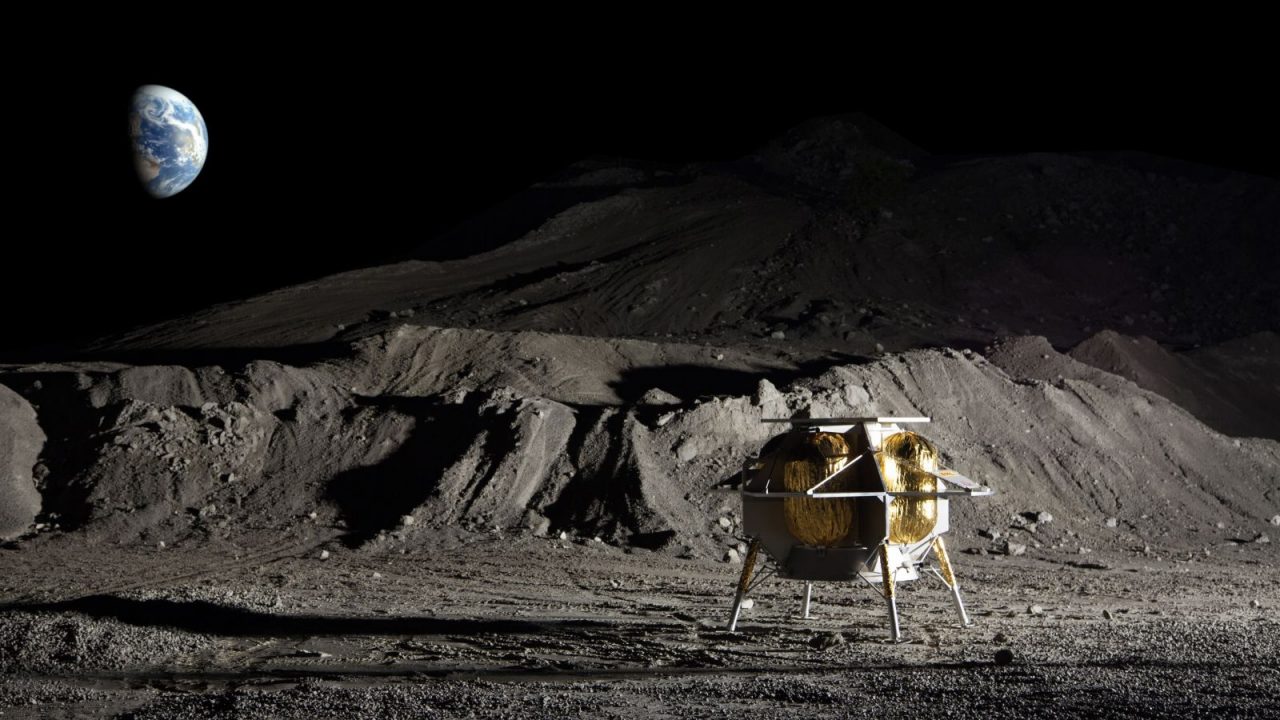NASA has selected the first three companies bringing payloads to the moon

The first company plans to land on the moon as early as next year.
The news: Today NASA announced that three companies have been selected to carry the agency’s experiments to the lunar surface as a part of the Commercial Lunar Payload Services (CLPS) program. Astrobotic, Intuitive Machines, and Orbit Beyond are the lucky winners. They say they will send their landers to the moon in 2020 and 2021. The endeavor will help inform the United States’ push to return humans to the moon by 2024, also known as Artemis.
The process: The companies were selected from a shortlist of nine that were picked back in November to compete for up to $2.6 billion in contracts to shuttle payloads to the moon. “All the previous activities on the moon have been funded by superpowers,” Astrobotic CEO John Thornton told us last year. “What’s to say a private company can land there and make money?”
Meet the winners
- Astrobotic is a former Google Lunar XPrize team that continued its mission to attempt to land on the moon even after the competition ended. Since then, it’s reinvented itself as a moon cargo delivery company. With the 14 new payloads announced today, it’s now committed to transporting a total of 28 to the moon. The new batch will land in a large lunar crater called Lacus Mortis. The company says it’s going to launch in June 2021 and land in July 2021.
- Intuitive Machines plans to carry five experiments to the moon in 2021. It’s being tasked with exploring a dark spot on the lunar surface, known as Oceanus Procellarum.
- Orbit Beyond got the biggest deal of the three: $97 million to ferry four of NASA’s projects to the moon. If it launches as planned next year it’ll be the first of the lot to land, and will investigate the lava plain Mare Imbrium.
Intuitive Machines and Orbit Beyond plan to launch aboard a SpaceX Falcon 9 rocket, while Astrobotic has not yet selected its launch provider.
What’s next: There are a lot more contracts to come, for projects including construction of Gateway (a lunar orbital outpost) and the rockets to support the launches. “Next year, our initial science and technology research will be on the lunar surface, which will help support sending the first woman and the next man to the moon in five years,” said NASA administrator Jim Bridenstine. “Investing in these commercial landing services also is another strong step to build a commercial space economy beyond low Earth orbit.”
Deep Dive
Space
How to safely watch and photograph the total solar eclipse
The solar eclipse this Monday, April 8, will be visible to millions. Here’s how to make the most of your experience.
How scientists are using quantum squeezing to push the limits of their sensors
Fuzziness may rule the quantum realm, but it can be manipulated to our advantage.
The race to fix space-weather forecasting before next big solar storm hits
Solar activity can knock satellites off track, raising the risk of collisions. Scientists are hoping improved atmospheric models will help.
Stay connected
Get the latest updates from
MIT Technology Review
Discover special offers, top stories, upcoming events, and more.